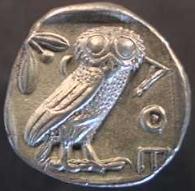
AnthonyFlood.com
Panentheism. Revisionism. Anarchocapitalism.

[link to CV]
Panexperientialist Physicalism
and the Mind-Body Problem
II: A New Approach and its Problems
I agree, accordingly, with Chalmers (1995, p. 204) and others (McGinn, 1991, pp. 2, 104; Nagel, 1986, pp. 8-10; Searle, 1992, pp. 26, 49) that a constructive solution, if possible at all, will require a radically new approach. I also agree with Chalmers with regard to the basic direction that this new approach must take: while holding to a position that is still recognizably physicalist, we should “take experience itself as a fundamental feature of the world” (p. 210). Given this ontological hypothesis (I add), the conceptual aspect of the mind-body problem could be solved far more readily than most of the empirical problems.
There is, interestingly enough, agreement on this point by the philosopher who has most forcibly declared the problem of consciousness permanently insoluble: McGinn (1991, p. 28n) has said that, if we could suppose them to have proto-conscious states, it would be “easy enough to see how neurons could generate consciousness.”
While not endorsing this approach himself, McGinn (p. 81) has cited a passage in Kant that provides a possible starting-point for it. In this passage, Kant (1965, p. 381/B428) said of the problem of the communion of soul and body:
The difficulty peculiar to the problem consists . . . in the assumed heterogeneity of the object of inner sense (the soul) and the objects of the outer senses . . . . But if we consider that the two kinds of objects thus differ from each other, not inwardly but only in so far as one appears outwardly to another, and that what, as thing in itself, underlies the appearances of matter, perhaps after all may not be so heterogeneous in character, this difficulty vanishes.
The apparently insuperable problem would disappear, suggested Kant, if we held that mind and body are in themselves of the same nature, and that the idea that they are different in kind results from observing them from different vantage points: mind from within, matter from without. Whatever the status of this proposal within Kant’s own thinking, a solution to the mind-body problem can most likely be found, I propose, by beginning with this basic idea, while working it out in a way that differs greatly from the Leibnizian version with which Kant was familiar. [1]
I have suggested, in fact, that with such a starting-point a solution to the basic conceptual problem is relatively easy. Like Chalmers, however, I stress the “relatively.” The hard problem from this perspective will be twofold.
First, although the panexperientialist starting-point overcomes what has thus far been considered the heart of the mind-body problem, it has obviously not been easy for philosophers and scientists to see why we should adopt that starting-point.
Second, even when the basic idea is accepted, it is far from obvious how to work out this idea in a plausible way (as illustrated by the failure of Leibniz, hardly a dimwit).
That these are indeed severe difficulties is shown by the reception panexperientialism (usually called “panpsychism”) has received thus far. Although some version of it has been proposed by a number of first-rate philosophical and scientific minds (such as Leibniz, Fechner, Lotze, Peirce, Bergson, James, Whitehead, Hartshorne, Sewall Wright and David Bohm), it is scarcely considered in mainline discussions of the mind-body problem.
Virtually everyone assumes that we must choose between some version of dualism (including epiphenomenalism) and some version of materialism. Thanks partly to Nagel—who believes that some version of panpsychist physicalism must be true but also suspects it to be “unintelligible” (1979, pp. 181-2, 188-9; 1986, pp. 49-50)—some contemporary philosophers do mention it. But they usually dismiss it quickly as “implausible” (Seager, 1991, p. 241n),[2] “extravagant” (McGinn, 1991, p. 2n), or even “outrageous” and “absurd” (McGinn, 1982, pp. 31-2). Panexperientialism clearly has an uphill battle.
In the remainder of this essay, I will suggest one way of dealing with panexperientialism’s twofold problem. The next two sections will be devoted to the first part, namely: why should we suppose the ultimate units of nature to embody experience and spontaneity? The fifth section will discuss the failure of dualism and materialism with regard to some criteria that an acceptable theory should satisfy. In the final section, I will sketch out a theory that I call “panexperientialist physicalism,” seeking to show that panexperientialism, at least in this version, is far less implausible and far more helpful than has generally been supposed.
Next
III: Why Should We Be Suspicious of Vacuous Actuality?